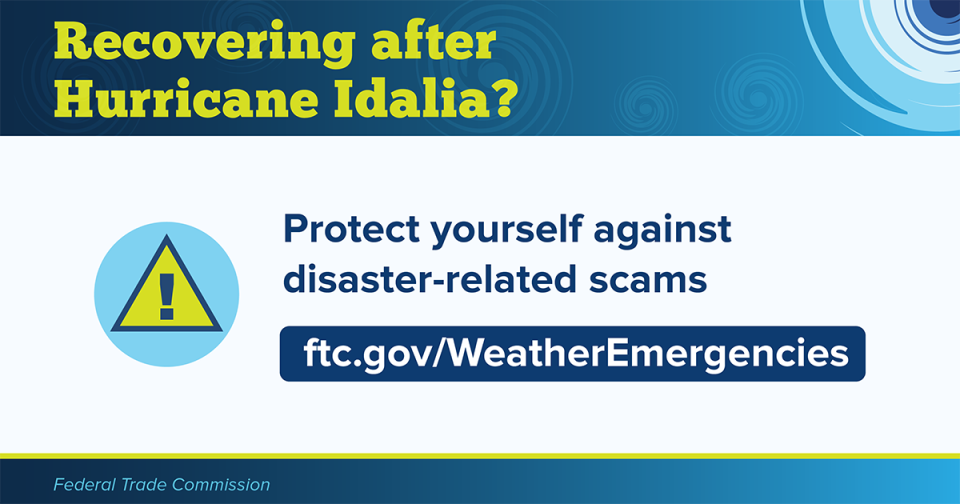 Figuring out the full extent of Hurricane Idalia’s damage could take weeks or even months. But we already know that scammers will follow the path of the storm and try to take advantage of people doing their best to recover. While storms are unpredictable, there are ways to spot the tactics these scammers use — even if they change some of the details — so, read on.
Figuring out the full extent of Hurricane Idalia’s damage could take weeks or even months. But we already know that scammers will follow the path of the storm and try to take advantage of people doing their best to recover. While storms are unpredictable, there are ways to spot the tactics these scammers use — even if they change some of the details — so, read on.
As you focus on cleaning up, rebuilding, and getting back on track, learn more about disaster recovery scams. It’ll help you protect yourself and others affected by Hurricane Idalia. Here are a few ways to get started:
- Follow the latest official updates on Hurricane Idalia at usa.gov/hurricane-idalia.
- Know scammers impersonate government officials, safety inspectors, utility workers, and others in the aftermath of a disaster. They might ask for money or personal information like your Social Security or account numbers. Don’t pay, and remember that nobody legit will contact you unexpectedly to ask for your Social Security, bank account, or credit card number.
- Never pay for government assistance. Anyone who asks you for money to get a FEMA application or help is a scammer. Walk away and report them. To get alerts and more information, download the FEMA Mobile App.
- Spot scams by how they ask you to pay. Scammers will often demand you pay in a way they can get your money quickly — by wiring money, putting money on a gift card, sending cryptocurrency, using a payment app, or sending cash. If someone you don’t know says you have to pay that way, it’s a scam.
- Share what you know to help others stay alert to disaster-related scams you’re familiar with. Talk to friends and family and encourage them to learn more. Share this blog and other resources at ftc.gov/WeatherEmergencies with your social media followers.
Spot or suspect a recovery scam? Tell the FTC at ReportFraud.ftc.gov.




